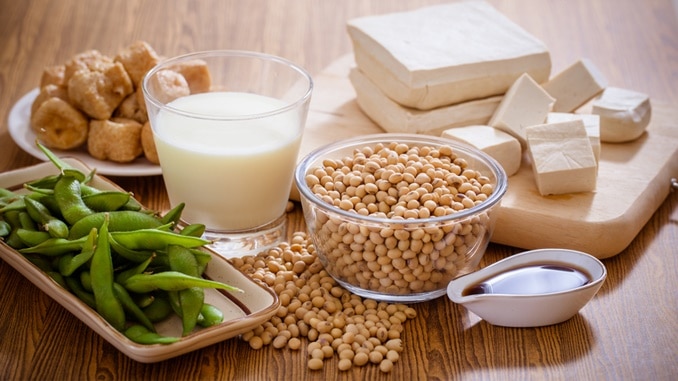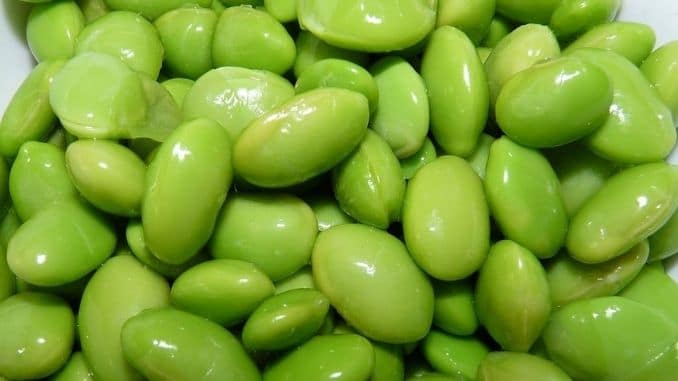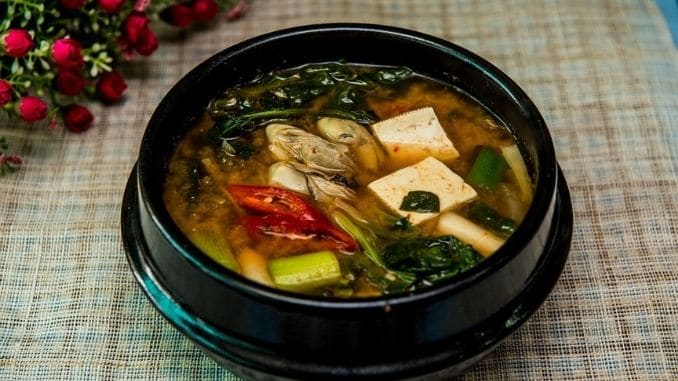
Soy is one of the eight most common major food allergies affecting human beings today. (The other seven are milk, egg, peanut, tree nuts, wheat, fish and crustacean shellfish.) The American College of Allergy, Asthma & Immunology (ACAAI) states that soy allergies typically first appear in infants and children 3 years of age and younger, although most then outgrow them by the age of 10.
Not all children are so lucky, however, and some carry the allergy into adulthood. Because soy is present in so many of our foods today, it can be a difficult allergy to manage. We’ve got some tips to make it easier below.
What Is Soy?
Soy can refer either to the soybean plant, from which we get soy foods or the protein derived from soybeans, which is often used as a replacement for animal proteins in various foods.
The soybean, or soya bean plant, is native to East Asia, where it’s widely grown because of the edible bean it produces. This bean is part of the legume family and is so nutrient-rich that food manufacturers have found a multitude of ways to use it.
You can find soybean meal in animal feeds and packaged meals, soybean products like textured vegetable protein as ingredients in meat and dairy substitutes and soy vegetable oil and soy milk, which is used to make tofu.
How nutritious are soybeans? If you ate about one cup of the cooked beans, you’d get about 300 calories. About a third of that would be protein, other third carbohydrates and about 20 percent fat. You’d also get about 40 percent of your daily intake of fiber, about 50 percent of iron and phosphorus and about 70 percent of manganese, along with about 40 percent of vitamin K.
One of the reasons soy is so popular is that it is among the best sources of plant-based protein, which makes it an ideal food for vegetarians and vegans. A number of studies have also uncovered potential health benefits with soy.
According to a 2016 study, there is evidence that soy may reduce the risk of heart disease, alleviate hot flashes and ease symptoms of depression. Nutrients called “isoflavones” in the soybeans are believed to be responsible for these healthful benefits.
Is Soy Good or Bad for You?
Despite the studies on the health benefits of soy, there have been some concerns about the food being unhealthy, partly because of the way it’s grown today. The majority of soy products raised in the United States are genetically modified, and they’re also sprayed with the herbicide Roundup, which some studies have suggested may have negative health effects.
The other issue is that soy contains isoflavones that, although known to be connected to some health benefits, can also act as hormone disruptors. These isoflavones function in the body as “phytoestrogens” or plant-based estrogens, which means they can activate estrogen receptors in the body. When they do so, they can interfere with the normal functioning of estrogen.
It is this action that may help to reduce the symptoms of menopause, but some animal studies have also suggested that it could increase the risk of breast cancer. In a 2001 study, for example, researchers found that soy isoflavones stimulated breast cancer growth.
Other studies, however, have found the opposite — that consuming soy reduces the risk of breast cancer. That means we still need more research to determine exactly what’s happening and why, and if the effects of soy depend on the kind of soy consumed.
Soy Allergy Often Develops Early
In people with soy allergies, the immune system malfunctions. It mistakes the presence of soy proteins as harmful invaders and attacks them. As is the case when you experience any type of allergy, you may experience symptoms like the following:
- Tingling in the mouth
- Stuffy or runny nose
- Skin redness or flushing
- Hives, itching or skin reactions (eczema)
- Abdominal pain, diarrhea, nausea or vomiting
- Swelling of the lips, face, tongue or throat
- Wheezing or trouble breathing
Most of the time, the symptoms do not become serious with a soy allergy, but rarely it can cause a life-threatening event called anaphylaxis, in which the person cannot breathe, has a rapid heartbeat and may go into shock. This type of serious reaction is normally restricted to those who have other allergies along with the soy allergy or who also have asthma.
Researchers have found that a soy allergy can develop in infants who are found to be allergic to cow’s milk. Often these infants are switched over to soy formula as an alternative if not breastfeeding. According to a 2011 study, about 0.4 percent of children who had been fed soy protein formula in the first six months of life to prevent allergic diseases went on to develop a soy allergy.
Other studies have found that children who have a cow’s milk allergy early on may have a soy protein allergy too at the same time. In fact, in those with allergies to milk, allergies to soy were seen more often than in those without allergies to milk.
Parents may want to avoid soy-based infant formulas for this reason as well as because some studies have linked them with other health issues. Children exposed to the soy-based formula have been found in studies to experience developmental issues, such as earlier breast-tissue development, earlier onset of puberty and more painful menstrual periods, which is more evidence of a potential hormone-disruptive effect.
It’s simple to diagnose a soy allergy. An allergist will likely recommend a skin-prick test and/or a blood test, both of which can show evidence of a soy protein allergy. If these tests don’t make it clear, the doctor may recommend a “food challenge,” in which the individual eats a small amount of soy to see if symptoms develop. The only treatment for a soy allergy is to avoid soybeans and foods that include soybeans and other soy ingredients.
Where Will I Find Soy and Soy Ingredients?
A soy allergy can be particularly difficult to manage because soy is so ubiquitous in our food supply today. The good news is that because of the Food Allergen Labeling and Consumer Protection Act of 2004, manufacturers of packaged food items containing soy or soy-based ingredients have to reveal those ingredients on their product labels. Below are several of the most common foods you’ll need to avoid if you have a soy allergy:
- Edamame (whole, immature soybeans)
- Soy milk, soy cheese, soy yogurt, and soy ice cream
- Soy flour, soy grits, soy nuts, and soy sprouts
- Soya and soybean curd
- Tofu, miso, natto, tempeh, and shoyu
- Soy sauce and tamari
In addition to these basic soy foods, you may also find soy ingredients hidden in the following items:
- Vegetable oil, vegetable gum, vegetable broth, and vegetable starch
- Soy protein
- Lecithin
- Hydrolyzed vegetable or plant protein
- Textured vegetable protein
- Monoglycerides
- Monosodium glutamate (MSG)
- Natural and artificial flavorings
Soy may also sometimes but not always be present in the following foods, so be careful to read labels carefully:
- Asian foods
- Chicken nuggets
- Baked goods
- Canned soups and broths
- Canned meats (tuna) and processed meats
- Cereals, cookies, and crackers
- High-protein energy bars, snacks, and drinks
- Infant formulas
- Low-fat peanut butter
- Sauces like Worcestershire and teriyaki
- Soaps and moisturizers
Be on the lookout for phrases like “may contain soy” or “made in a facility with soy” as that may indicate cross-contamination.
How to Live with a Soy Allergy
In addition to avoiding all the foods above, are there other things people can do to make living with a soy allergy a little easier? There are. First, you may be able to consume the following foods safely:
- Soy oil: Most soy-allergic people can still enjoy soy oil — avoid cold-pressed, expeller-pressed or extruded soybean oil
- Vegetable oil derived from soy: This is often well tolerated by those allergic to soy
- Highly refined soy or soybean oil: Clinical studies have indicated that highly refined oils are usually safely eaten by those allergic to soy; refined oils typically have much lower levels of the allergen
- Soy lecithin: This is a soy ingredient, but the amount of soy protein is low enough that it usually doesn’t result in an allergic reaction
Second, you want to be cautious about nutrients that may be lost in your diet because you’re avoiding soy, particularly in children. Make sure you’re getting enough protein, thiamine, riboflavin, iron, calcium, zinc and vitamin B6.
Other good sources of these nutrients that are safe on a soy-free diet include meat, fish, poultry, eggs, other legumes, dairy (if safe), fruits and vegetables and enriched grains.
Third, if you have only minor allergies, you may be able to control your reactions with antihistamines, particularly if you eat something with hidden soy in it. These can help relieve discomfort or protect you if you’re going into a situation where you’re not sure what’s in the food.
Next, don’t be afraid to speak up about your or your child’s allergy, so that others are aware. Don’t be afraid to ask questions about how your food is prepared or where it comes from. Call a restaurant ahead of time and talk to the manager or chef about menu items that will be safe for you. Be particularly cautious of risky foods like sauces, prepackaged baked goods, bread, salad dressing and other items that may be cooked in soybean oil. Finally, if you’re at risk for a severe reaction, never forget to take your epinephrine auto-injector with you. It could save your life.
For your guide to the best foods to heal your body, check out The Best Foods that Rapidly Slim & Heal in 7 Days, here!






